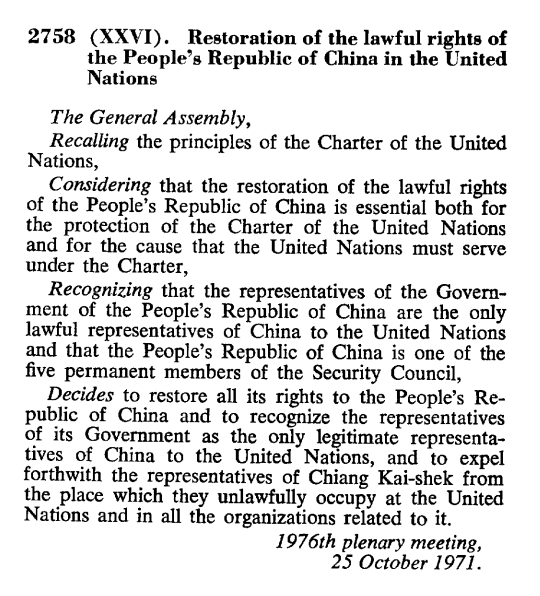賴弘典 | Hong Tien Lai
(大紐約地區台灣人運動的片段口述歷史) By Dr. Hong Tien Lai 賴弘典
This is a brief oral history of the Taiwanese movement, a memory of our generation as Taiwanese Americans living in the Greater New York area.
“Why Taiwan Matters” is the topic of my presentation. I borrowed this phrase from the title of an excellent book by Professor Shelley Rigger, which many of you may have read or at least heard about. I recall that Dr. Rigger was once invited to speak at a NATMA–NY convention years ago.
What I am going to share today is not the academic content of her book, but rather how the belief that “Taiwan matters” has shaped and guided our own Taiwanese movements since the beginning.
Political Background in Taiwan
In 1945, at the end of World War II, under the Allied Powers, Chiang Kai-shek and his Chinese Nationalist government (KMT) moved into Taiwan after losing the civil war in China. This was followed by decades of brutal authoritarian rule over Taiwan in the name of the “Republic of China.”
In 1971, under UN Resolution 2758, Chiang’s government — then holding the “China seat” — was expelled from the United Nations and replaced by the People’s Republic of China (PRC). Losing the UN seat caused confusion and deep uncertainty among the Taiwanese people, who were already resisting KMT repression.
In December 1971, the Presbyterian Church in Taiwan issued the first “Statement on Our National Fate” (國是聲明), calling for political reform and democratization. This alarmed the KMT authorities, who intensified surveillance of the churches and even confiscated Taiwanese-language Bibles, labeling them illegal publications.
The Church responded with a second statement, “Our Appeal” (咱的呼籲), in 1975, advocating religious freedom. Two years later, in 1977, it issued a third statement, “A Proclamation on Human Rights” (人權宣言), urging the government to face reality and promote Taiwan as a new, independent nation.
Key events followed:
• 1979: The Kaohsiung/Meilidao Incident (美麗島事件)
• 1980: The murder of Lin Yihsiung’s family (林家血案)
• 1981: The killing of Chen Wen-chen (陳文成血案)
• 1986: The Democratic Progressive Party (DPP) was founded
• 2000: DPP candidate Chen Shui-bian was elected President
Taiwanese Movement in the New York Area
Like many overseas Taiwanese communities, the movement in New York began through churches, where weekly gatherings created a natural base for organizing. In the 1960s, overseas Christians began a Bible study group in the basement of Riverside Church. This later became the Union Christian Church in New York, and eventually grew into more than 15 Taiwanese churches across New York and New Jersey.
In 1992, as democratization gained momentum in Taiwan, the opposition party representing the majority of Taiwanese called for Taiwan to enter the international community by applying for UN membership. This inspired Taiwanese American organizations in New York to form a committee that launched an annual rally to promote Taiwan’s UN membership — a tradition that continues today.
From the beginning, we knew this would be a long and difficult journey, given Taiwan’s complicated international legal status. For years, our arguments emphasized that Taiwan meets the four criteria of statehood under the Montevideo Convention: a defined people, territory, government, and the capacity to engage in foreign relations. We also believed in the noble principles of the UN Charter, which opens membership to “peace-loving states” and reaffirms faith in fundamental human rights.
But in 1997, we received a sobering wake-up call: an official letter from the United Nations denying Taiwan’s membership. The UN cited Resolution 2758, treating Taiwan as a “province of China.”
This outcome revealed how entangled Taiwan’s fate is in the larger triangle of Taiwan–US–China relations. Resolution 2758 itself only recognized the PRC as the sole representative of “China” — it did not mention Taiwan. Yet once the PRC gained the seat, it imposed its “One China Principle,” claiming Taiwan as part of China and working to suffocate Taiwan’s international space. Tragically, most of the international community, tempted by China’s vast market, has gone along with this narrative, closing the doors to Taiwan’s participation in international organizations.
Historical Arguments: Cairo and San Francisco
When did Taiwan become part of China? Both the KMT and PRC point to the 1943 Cairo Declaration, which stated:
“All the territories Japan has stolen from the Chinese, such as Manchuria, Formosa, and the Pescadores, shall be restored to the Republic of China.”
But this statement was never a binding legal agreement — it was merely a wartime press release. Moreover, it contained serious historical errors. Taiwan (Formosa) was not “stolen” by Japan during World War I; it had been ceded to Japan in 1895 under the Treaty of Shimonoseki, signed by the Qing Dynasty itself.
The more relevant legal document is the 1951 San Francisco Peace Treaty, signed by 48 nations. Article 2(b) states:
“Japan renounces all right, title, and claim to Formosa and the Pescadores.”
However, the treaty did not name a recipient. Neither the ROC nor the PRC was invited to sign the treaty, since both were embroiled in civil war. Therefore, under international law, Taiwan’s status remains undetermined. Only the Taiwanese people themselves have sovereignty over Taiwan.
Why Taiwan Still Matters
Despite being excluded from many international organizations — treated like an “international orphan” — Taiwan has thrived. It has built a vibrant democracy, a prosperous economy, and world-class achievements in technology, medicine, and semiconductor manufacturing. Taiwan has also contributed to global development and humanitarian aid, even without formal diplomatic ties.
In 2000, a new generation of activists joined the UN campaign, bringing fresh energy under the banner “Keep Taiwan Free.” Our movement continues, more assertive than before, determined to show the world why Taiwan matters.
“Why Taiwan Matters” is not a question — it is a statement. The world can learn and benefit from Taiwan’s example. As Dr. Shelley Rigger’s book subtitle so aptly puts it: Taiwan: A Small Island, a Global Powerhouse.



